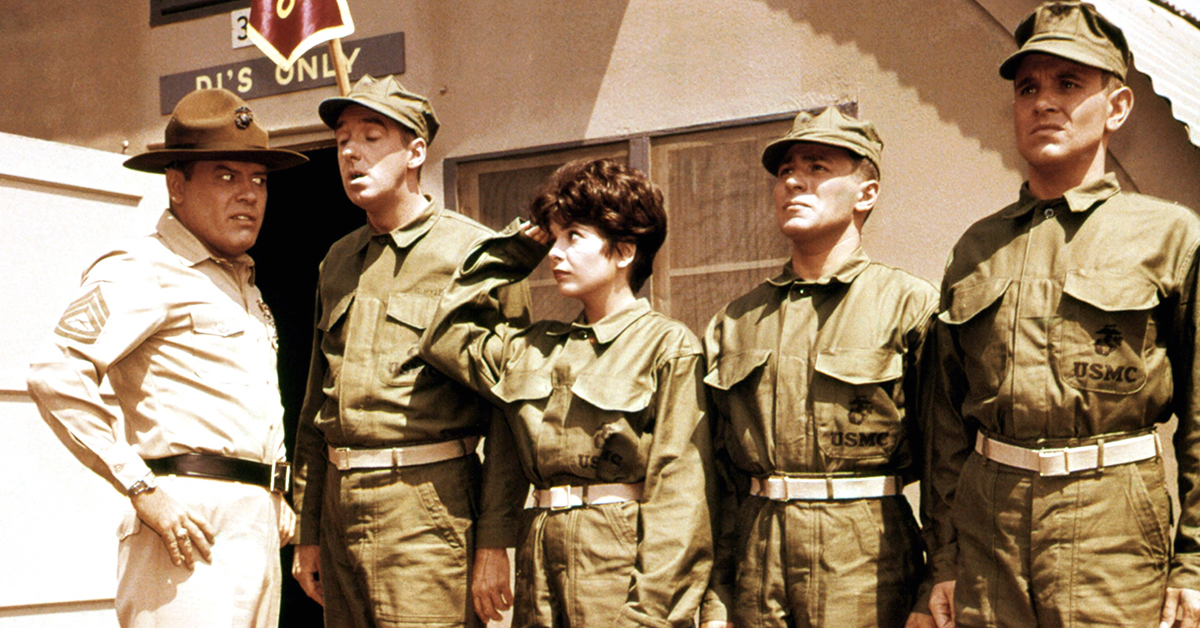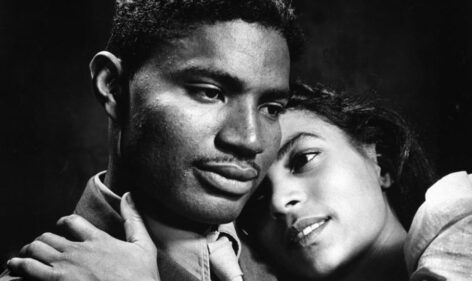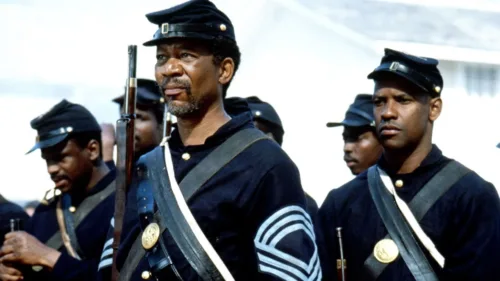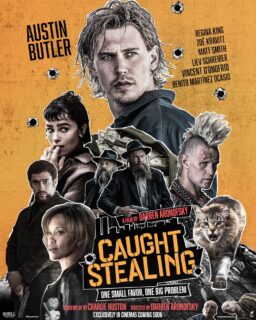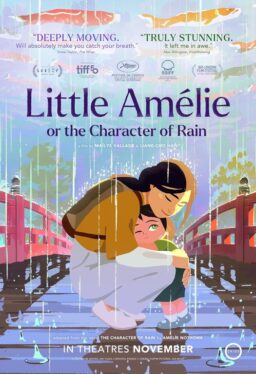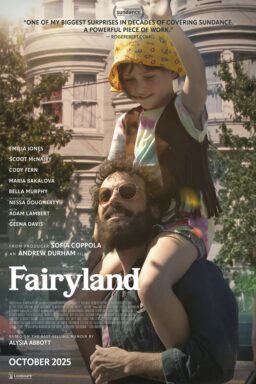The beginning of the end of an era was signaled on April 1, 1968, when “The Andy Griffith Show” aired for its final time as a regular series. Three days later, the heyday of the U.S. Civil Rights Movement ended with the assassination of the Reverend Dr. Martin Luther King, Jr. Unrelated as the two events seem on the surface, their narratives were intertwined. King and other activists employed television as a means of casting a light on racism. Griffith’s show, meanwhile, used the medium to frame the U.S. South as a last bastion of peaceful, wholesome life.
The larger the space the Civil Rights Movement occupied in the U.S., the more rural/country TV series appeared. By the time the Civil Rights Act was passed on July 2, 1964, it was a genre, well represented in the Top 10 in shows like “The Beverly Hillbillies” (#1), “Petticoat Junction” (#4), and “The Andy Griffith Show” (#5).
The next year, “Gomer Pyle, USMC,” a Griffith spinoff, was the third most popular watch in the country. At the same time that Reverend Dr. Martin Luther King, Jr. was using the medium to brand Southern sheriffs as intolerant obstacles to ethnic harmony, one of TV’s most beloved characters was a Southern sheriff. What does the rural craze tell us about the national zeitgeist?
To unpack that, one must examine the engines behind the trend. In the 1956 film “The Man In the Gray Flannel Suit,” the lead character is an upwardly mobile male writer for a Manhattan-based nonprofit, who lives in suburban Connecticut with his wife and children. Portrayed by Gregory Peck, the subject, like tens of millions of his contemporaries, is a World War II vet. As many of them do, he suffers from what was then termed “shell shock” (PTSD). The movie deals with the pressures of his professional life, and the stress of keeping up with the Joneses. The TV and Hollywood industry of the early 1960s was dominated by such veterans, among them Paul Newman, Dick Van Dyke, producers Rod Serling and Aaron Spelling, James Garner, Tony Curtis, Lee Marvin, James Coburn, David Janssen, and Steve McQueen. The persons writing their material were almost all male, and for the most part their same age(s). For the first time since the war, “successful” Americans, their cultural cues shaped by white males in New York City and later Los Angeles, were wondering if the muscle car, backyard swimming pool, envious barbecue grill and daily commute were worth it all.
This provoked nostalgia for a simpler time. Fishing rods and swimming holes; schools within walking distance. On October 30, 1959, the fifth episode of the new paranormal morality play (produced by World War Two paratrooper Rod Serling) “The Twilight Zone” aired. Titled “Walking Distance,” it concerned a 36-year-old New York City ad exec “…in charge of media…” named Martin Sloane, portrayed by Gig Young. When Sloan stops to have his car repaired near his hometown (bluntly named “Homewood”), he walks into town to kill time. Once there, he finds little has changed since his boyhood, including prices at the local soda fountain, and the local carousel where he was once injured. Soon, Sloan discovers he has transported back to 1934. In an encounter with his parents, his father warns adult Martin that he is out of place, which is then proven out.
In another episode in the series, “A Stop At Willoughby,” first seen on May 6, 1960, a New York City ad exec daydreams each night on his train ride home to Connecticut, that he is visiting a small town called Willoughby in 1888. The character, Garth Williams, naturally prefers the bucolic Willoughby, to the “push, push, push” pace dictated by his Manhattan boss. Williams doesn’t want to go back to the rat race. Enter the rural sitcom craze.

The appeal of the country themed series’ was their evocation of a less complicated time—an era of lounging on front porches like Uncle Joe of “Petticoat Junction” (set in fictional Hooterville, Kansas) or Sheriff Andy Taylor of Mayberry. Both Andy and “Beverly Hillbillies”‘ Jed Clampett preferred hunting and fishing and whittling to chasing a fast buck. Both men were widowers. In the case of each, an older woman relative performed the household chores.
As the rural sitcoms became TV staples, the real-life headlines and network news were dominated by Dr. King’s campaign to desegregate Albany, Georgia in 1961, Birmingham in 1963, and with the aid of thousands of volunteers, college students and parishioners, to bring equal voting rights to Selma, Alabama in 1965. These struggles often involved violence, bombings, and bloodshed. “Freedom,” voting rights, and urban rebellion were debated on Sunday news roundtable shows. Network special reports explored “the race problem.” For some in the U.S., the South was at once synonymous with unthreatening sitcom figures and vehement segregationist sheriffs. On living rooms screens the depiction was idyllic, until the evening news came on.
“The Beverly Hillbillies” debuted on September 26, 1962. Some of its characters were loosely adapted from the popular comic strip Lil’ Abner, including Jethro Bodine (Lil’ Abner) and Granny Clampett (Mammy Yokum). Ellie Mae (Clampett) is very similar to the cartoon’s Daisy Mae. The series finale aired on March 23, 1971. “The Andy Griffith Show” premiered on October 3, 1960, and ran until April 1, 1968. “Mayberry, R.F.D.” was a Griffith show spinoff which aired from September 23, 1968 until March 29, 1971. “Gomer Pyle, USMC” ran from September 25, 1964 to May 2, 1969. The last episode of “Green Acres” was April 27, 1971, after premiering September 15, 1965, two years to the day after the bombing of Birmingham’s Sixteenth Street Baptist Church, in which four young Black Sunday School girls were killed. “Petticoat Junction” was on air from September 24, 1963, a month after the March On Washington, until April 4, 1970—two years to the day after Dr. King’s murder. “Hee Haw” was a variety series, a country response to the popular NBC hit ”Rowan & Martin’s Laugh-In.” Its debut was June 15, 1969, and it ran until 1971.

What did the rural TV trend mean for the Civil Rights Movement? Dr. King and his cohorts were masterful at leveraging the newest medium, television, to introduce the rest of the country and the world to the horrors of the separate but unequal U.S. South. In Birmingham, much to the chagrin of some local Black leaders and business owners, King enlisted schoolchildren to march against racial exclusion. Televised and newsreel footage of those children being attacked by police German shepherds, and pilloried with fire hoses shooting spray strong enough to rip the bark from a tree, circulated the globe.
In Selma, on what became known as “Bloody Sunday,” Alabama state troopers pummeled elderly Black women with billy clubs and cattle prods, and trampled them underfoot on horseback. Some TV viewers who tuned in late assumed the carnage was part of the scheduled Sunday night movie “Judgement At Nuremburg.” King and the Southern Christian Leadership Conference’s methods were deemed controversial by people of all ethnicities, but the imagery was compelling. That drove more Northern whites and students to offer their assistance in the struggle. Soon the events moved to President Johnson’s legislative pen, and placed the U.S. under the scrutiny of a global lens. The country sitcoms persisted in presenting the rural U.S. and the South as havens of a bygone utopia.
How did a joke about the Emancipation Proclamation work its way into a teleplay of the North Carolina-set “Andy Griffith Show”? Well, because Opie’s teacher Miss Crump gave too much homework. And because Deputy Barney Fife likes to boast. Barney tells Andy’s young son, portrayed by Ron Howard, “History was right up my alley.” Andy, his former classmate says, “It was? I don’t remember that.” The sheriff calls his bluff.
“What was the, uh, Emancipation Proclamation?”
“You kidding? Everybody knows that,” Barney protests.
“Well good, it ought to be easy for you then. Go ahead, tell us about it.”
Barney waffles and stalls, and the gag becomes prolonged and awkward for some to watch, given the seriousness of the topic. Andy smiles through the teasing.
“Well, if you get so smart-alecky about it,” says Barney. “Maybe I’m not even going to tell you.”
“You see, Ope, you’re not the only one that has trouble with history,” says Andy. History was hard for me, too.”
En route to the punchline, U.S. viewers were treated to a ‘these folks’, and a ‘how else was they going to get themselves emancipated unless…’. Hardy, har, har. Hey Ope, did you hear the one about the four little Black Sunday schoolgirls? At any rate, that was the sole time race relations surfaced on “The Andy Griffith Show.” For the rest of its tenure, the show focused on themes of fatherly counsel, was a buddy cop series, and delivered homilies about the pitfalls of big city crooks spinning tangled webs of deceit for a small-town law enforcement chief.
Comedic tropes during the rural craze ran along two themes: The humble sagacity of Sheriff Andy Taylor and millionaire Jed Clampett, and the Southern or rural idiocy of practically every other character on those sitcoms, particularly Clampett house guests from back in the hills, Mayberry supporting and recurring players, and the Hooterville residents on “Green Acres.” Southerners and country folk were not painted as bigots, but because most of them were illustrated as buffoons, it was not much of a leap for Northerners or others to lump the biases of real life Birmingham Safety Commissioner Bull Connor and Selma, Alabama Sheriff Jim Clark, with the unworldly simpletons of the country comedies. To elites and Yankees, lack of sophistication became difficult to uncouple from racial intolerance. Characters such as Otis the Drunk, Ernest T. Bass, “Green Acres”‘ low level grifter Eustace Haney, and the slothful Joe Carson of “Petticoat Junction,” were hayseeds, peckerwoods, or rednecks. “Hee Haw” came along, and embraced all three. For Black viewers of this three-network era, the uncouth caricatures’ only redeeming qualities were that their laziness and conniving manners, for once, were associated with white people and not the Black audience themselves, and that their sheer stupidity helped explain how Jim Crow persisted despite the fact all humans are created equal. Let someone else play the fool for a change.
The mid-1960s were not totally absent of sitcoms depicting mixed marriages or neighborhood integration. This was accomplished via metaphor. In 1964, two months after the Civil Rights Bill passed, “The Munsters” and “The Addams Family” debuted. Both series’ featured families of ghouls, who lived in otherwise “normal” neighborhoods and never caught on to why visitors and callers were horrified by them. The same season, “Bewitched” introduced a mortal—a New York City ad agent—married to a witch. 1965’s “I Dream Of Jeanie” was about an astronaut who takes a genie home as a housemate. In “Bewitched,” the wife, Samantha, passes for a mortal. In “Jeanie,” the astronaut conceals the magic, then later passes her off as a routine woman.

On February 25, 1970, “The Beverly Hillbillies“ aired an episode named “Hotel For Women.“ In it, avaricious banker Milburn Drysdale’s secretaries, including a Black staffer portrayed by Jean Bell, were confined to the rustic home of a ne’er-do-well nemesis of the Clampetts named Shorty Kellems. Shorty locks the women in his home, and attempts to squat in the Clampetts’ lavish home. As a conclusion to what was a two-parter about this confinement, the episode “Simon Legree Drysdale” aired on March 4, 1970. In a clever turn, the show’s writers even created a bonding moment for Granny and Jean. When a sympathetic Granny cooked the secretaries chitterlings (chitlin’s) and hog maws, Jean remarks that’s exactly what her mom makes. When Jean’s brothers show up, they assume their sister is enslaved. The burly brothers were portrayed by former pro football players Earl Faison and Ernie Wheelwright. The series was able to pull off this risk in taste and viewer consumption, because Drysdale had exhibited so much previous insensitivity to workers’ rights, and greed about the Clampetts’ considerable account size. Add the fact that Bell’s character was “enslaved” with her white co-workers.
By this time, TV execs realized younger and non-white viewers found the homespun hokeyness antiquated. As viewers craved more relevant content, and Black characters grew more frequent, ratings for the rural fare dipped. “Mayberry R.F.D” went from #4 in 1969, to #15 in 1970. Between 1969 and 1971, CBS dropped “R.F.D.,” “Green Acres,” “The Beverly Hillbillies,” “Petticoat Junction,” and “Hee-Haw” from its lineup, in what became known as “The Rural Purge,” when the three major networks, particularly CBS, canceled several country themed and Western series because they were not deemed relevant to the early seventies and its audiences.
In their place, shows like “The Mary Tyler Moore Show” and “All in the Family” emerged. These shows, after challenging starts to find their audiences, became hits in large part due to how they addressed sex, race, and Vietnam. Rival ABC had countered with “The Mod Squad” and “Room 222,” topical series about young undercover police, and an urban high school, respectively. Even the president with the Southwestern accent, Lyndon Johnson, announced on March 31, 1968 he was not seeking re-election. The next night, Andy Griffith’s last episode ran.
The artistic escapism of the country craze served a mixed purpose for television fans, but its roots were understandable. You can tell a lot about where America is as a society by what it watches.
